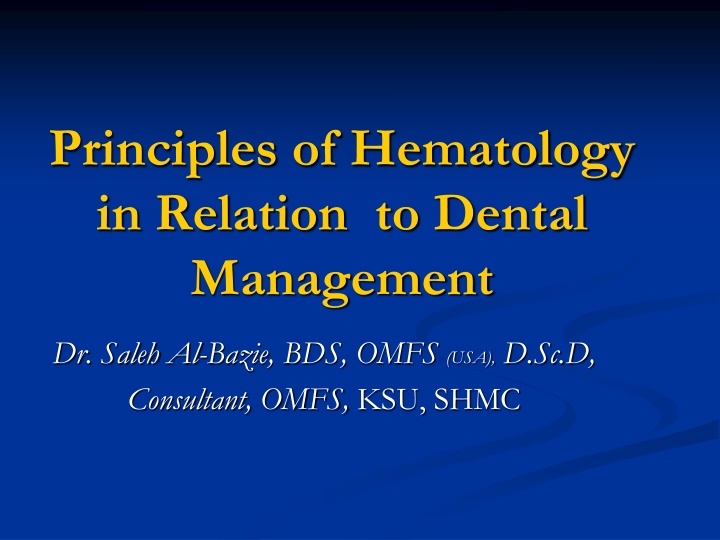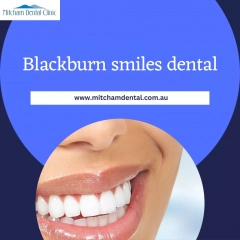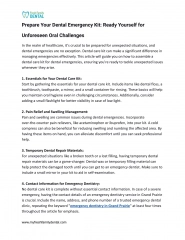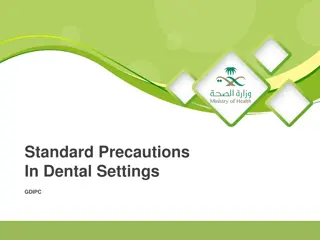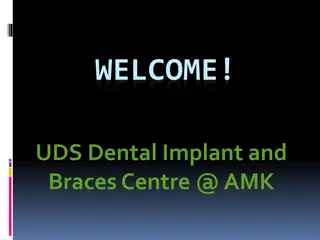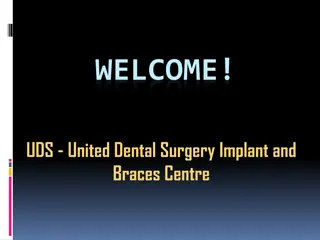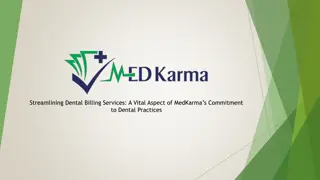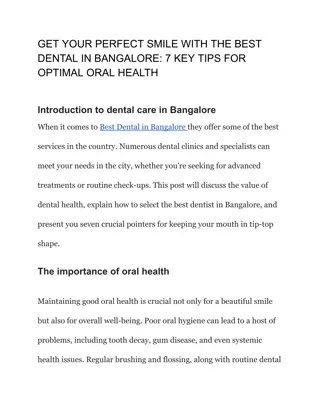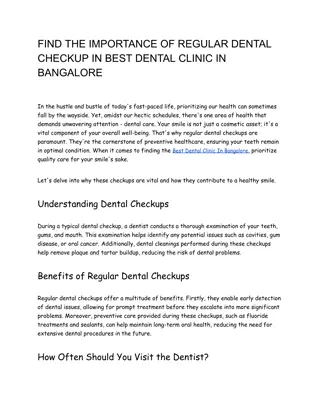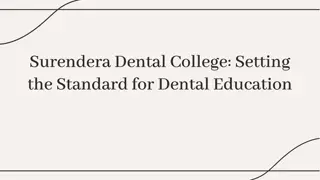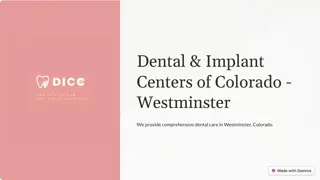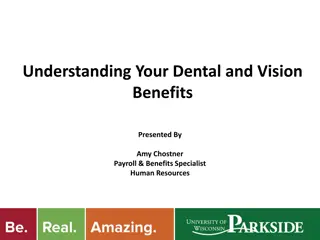Principles of Hematology in Dental Management
This presentation by Dr. Saleh Al-Bazie provides an overview of hemostasis, bleeding disorders, and their management in relation to dental procedures. It covers topics such as mechanisms of bleeding control, identification of bleeding problems, and platelet disorders. The importance of patient identification as a bleeder and necessary tests to order are also discussed.
Download Presentation

Please find below an Image/Link to download the presentation.
The content on the website is provided AS IS for your information and personal use only. It may not be sold, licensed, or shared on other websites without obtaining consent from the author.If you encounter any issues during the download, it is possible that the publisher has removed the file from their server.
You are allowed to download the files provided on this website for personal or commercial use, subject to the condition that they are used lawfully. All files are the property of their respective owners.
The content on the website is provided AS IS for your information and personal use only. It may not be sold, licensed, or shared on other websites without obtaining consent from the author.
E N D
Presentation Transcript
Principles of Hematology in Relation to Dental Management Dr. Saleh Al-Bazie, BDS, OMFS (USA), D.Sc.D, Consultant, OMFS, KSU, SHMC
Goals provide an overview of the coagulation system concepts rather than details of hemostasis if time, discussion of some cases
OVERVIEW What is Hemostasis ? Mechanism of Normal Control of Bleeding. Classification and Etiology of Bleeding Disorders. Identification of Bleeding Problems. Management in a Dental Office.
What is Hemostasis ? It is simply the arrest of Bleeding ! Physiological Hemostasis depends of normal functioning of 1. Vascular Endothelium 2. Blood Flow Dynamic 3. Platelets 4. Coagulation Cascade 5. Anticlotting Mechanisms 6. Fibrinolytic System
Vascular integrity Platelet reaction Hemostasis Coagulation cascade
Conditions which can cause Bleeding Disorders Scurvy Infections Chemicals Allergy Genetic Defects Aspirin NSAIDs Alcohol Penicillin DIC Autoimmune disease vON Willibrand s disease Uremia Radiation Leukemia Hemophilia Christmas Disease Liver Disease Vitamin deficiency Anticoagulants
Platelet Disorders Normal 150,000-400,000/ml. 50,000/ml. 10,000/ml. drugs. Bone marrow failure. Elective surgery below 50,000/ml. is contraindicated. If count < 100,000, increased bleeding tendency If count < 20,000, spontaneous bleeding Hemorrhage Platelet Antibodies Immune diseases. Cytotoxic
PATIENT IDENTIFICATION Is your patient a BLEEDER ? A Good History : 1. Physical Examination. 2. Screening Clinical lab tests. 3. Observation of excessive bleeding following a surgical procedure.
WHAT TESTS TO ORDER ? TESTS 1. Liver Common Pathways) NORMAL 11-15 sec. Defective Vitamin K ABNORMAL PT (Extrinsic / dependent, factors, disease, Oral Anticoagulant 2. PTT. (Intrinsic / 30-45 sec. Hemophilia, vWD, Heparin Common Pathways) 3. BT 1-6 min. Platelet Disfunction (Platelet / vWD,Thrombocytopenia Vascular phases) 4. Platelet Count 150,000 to
HEMOPHILIA - A sex linked disorder 1in 5,000 to 1 in 10,000 male births Factor VIII deficient 80% reduction in or absence of Factor VIII leads to a bleeding disorder Hemophilia-A 1. mild 2. moderate 3. severe Factor VIII level 5-25% of normal 1-4% of normal < 1% of normal
SCREENING TESTS PT, Platelet count ======>Normal APTT Specific Factor Assays Factor VIII inhibitors ======>Prolonged
DENTAL MANAGEMENT Detection and Referral Consultation with Hematologist Hospitalization for surgical procedures Use of good surgical techniques Use of local measures, microfibrillar Collagen, Gelfoam with Thrombin, packed Collagen, Surgicel and sutures Prophylactic Antibiotics Avoid Aspirin
REPLACEMENT THERAPY Heat Activated and Recombinant Factor VIII / Cryoprecipitate for mild Hemophilia Fresh Frozen Plasma Fresh Whole Blood Epsilon - aminocaproic acid Local therapy with ice packs
HEMOPHILIA - B / CHRISTMAS DISEASE Factor IX deficiency (Vitamin K dependent) X-linked , Hereditary Affects 1 in 30,000 male births Mild (5-25%), moderate (1-4%), severe(<1%) Clinically similar to Hemophilia A
Screening Tests Specific Factor Assays PTT - PT - BT - Prolonged (corrected by normal serum but not by Barium - adsorbed Plasma) Normal Normal
Replacement Therapy Fresh Frozen Plasma or Prothrombin complex concentrates Lyophilized Factor IX concentrate
VON-WILLEBRANDS DISEASE Most common bleeding disorder Males and Females equally affected Abnormal Platelet function Prolonged BT May be a decrease in factor VIII leading to a prolonged APTT Mild Mucosal Bleeding Factor VIII Deficiency
VON-WILLEBRANDS DISEASE (continued.) Nose bleeds, heavy menses, bleeding gingiva, easy bruising Bleeding following surgery or trauma can be severe
vWD type I, II & III vWd type I : 1. most common. 2. Decrease in overall concentration of vWF. vWD type II : 1. Abnormality in vWF. 2. Mild symptoms vWD type III 1. Most severe form 2. vWF absent 3. Factor VIII very low 4. Prolonged BT, and APTT 5. Bleeding into muscles and joints.
Dental Management vWF Type I and Type II Surgical procedures by using DDAVP (Desmopressin) and EACA vWF Type III Fresh Frozen Plasma Cryoprecipitate replacement Factor VIII concentrates ineffective (contain low level of vWF).
Liver Disease History of Jaundice / Alcoholism ? Most coagulation factors produced in liver Defect in Coagulation or Platelets ? Screening Tests : 1. PT for Coagulation defect 2. BT for Platelet defect 3. If PT and BT are normal, surgery possible. Management : 1. Vitamin K for factor deficiency 2. Fresh frozen Plasma for Thrombocytopenia, deficiency of fibrinogen, plasminogen.
Dental Management of Patients on Anti Coagulation Therapy 2 main groups of Anticoagulants 1. Heparin 2. Coumadins
Heparin Inactivates Thrombin Inhibits activation of factors IX, X, XI &XII Inhibits aggregation of Platelets Immediate effect, given intravenously Good Anticoagulation level is kept at 2-3 times the control (Clotting time) 20-25 min., < 40 min.) Length of effect 2 - 4 hrs. Overdose may cause internal bleeding Action reversed by Protamine-Sulfate
Coumadin Inhibit in Liver Vitamin K - dependent clotting factors - II, VII, IX, & X Optimum effect achieved in 36-48 hr.. Therapy kept within 25-35 sec. (PT) Given orally, slow onset Length of effect 48 hrs. INR
Considerations Potential bleeders Surgery safe when PTT 1.5 - 2 times normal (20 -25 sec.) Handle tissues gently, use local measures Always consult physician before operating PTT always needed at least 24 hr.. pre-op. If anticoagulation level too high, withhold drug 1-2 days pre-op.
Considerations (continued.) Effect reversed by Vitamin K1 (25-50 mgs.), given slowly @ 5 mg/min. I/V. Recall
Drugs which inhibit Anticoagulants Antacids Barbiturates Oral Contraceptives Vitamin C
Drugs which Potentiate Anticoagulants Aspirin Broad Spectrum Antibiotics Methyl Dopa
Drugs with No Interaction Tylenol Librium DO NOT USE ASPIRIN.
CONCLUSION Encourage patients to maintain good oral health Dental treatment often requires hospitalization. Patients in terminal phase secondary to other diseases should be offered conservative dental treatment. With proper understanding and preparation, most indicated dental treatment can be provided
CLINICAL CLUES CLINICAL SIGN Lifelong history of easy bruising or bleeding. DISORDER Factor deficiency VWD Family history in Males only Hemophilia A or B Family history in both sexes Excess bleeding at surgery Factor XI deficiency, VWD Mild Factor deficiency VWD, Thrombocytopenia Acquired bruising tendency Aspirin / other drug Thrombocytopenia Delayed Bleeding Factor XIII deficiency Bruising / Bleeding starting during another illness Drugs, Thrombocytopenia, Acquired anticoagulant.
COAGULATION CASCADE INTRINSIC PATHWAY XII XIIa XI XIa Tissue Factor Tissue Damage EXTRINSIC PATHWAY IX IXa VIIa VII X Prothrombin V Xa Thrombin Fibrinogen Fibrin XIII XIIIa COMMON PATHWAY Stabalized fibrin
PATIENTS ON ASPIRIN THERAPY Irreversibly inhibits Cyclooxygenase Aspirin inhibits Platelet aggregation Bleeding time moderately prolonged One dose may inhibit Platelet function for a week Thrombin induced Platelet Activation unaffected Never give with another Anticoagulant Antidote Platelet transfusion
What are the three phases of hemostasis? Vascular Platelets Coagulation phases
Thrombocytopenia that less than 50,000/mm3 is absulote contraindication for elective surgery 50,000-100,000/mm3 is save to perform surgery provided normal platelets function Bleeding time is used to test platelets function
Which blood tests used to monitor warfarin (coumadin), ASA, and Heparin?
How dose heparin, ASA, Coumadin affect clotting?
Coumadin Affects extrinsic pathway, interferes with hepatic synthesis of vit K dependent clotting factors. VII XII XI PTT PT IX VIII X V II I PT - APTT, TT, PLC - N TT
Heparin Heparin: affects intrinsic pathways, prevents formation of prothrombine activator HMWK VII XII PK XI APTT PT IX VIII X V II I APTT - PT, TT, PLC - N TT
Heparin HMWK VII XII PK XI APTT PT IX VIII X APTT - PT, TT, PLC - N V II I TT * Factor deficiency * vWD * Inhibitors * Heparin therapy
Liver Disease HMWK VII XII XI APTT PT IX VIII X V II I PT, APTT - TT, PLC - N TT * Common Pathway Factor deficiency * Vitamin K deficiency * Oral anticoagulant therapy * Liver disease
ASA: Alter cyclooxygenase activity, which control the release of the adhesive protein from platelets.
What are the diseases caused by deficiency of factors VIII, IX?
VIII: Hemophilia A IX: Hemophilia B
Which blood clotting factors are vit K dependent?
What are the normal values for each of PT, PTT, platelets count, WBC count, Bleeding time (BT)?
PT: 12-14 sec PTT: 35-45min Platelets 150-400k WBC: 5-11k BT: 7-11 min
What are the reversal agents (if any) for each of ASA, Warfarin, and Heparin?
